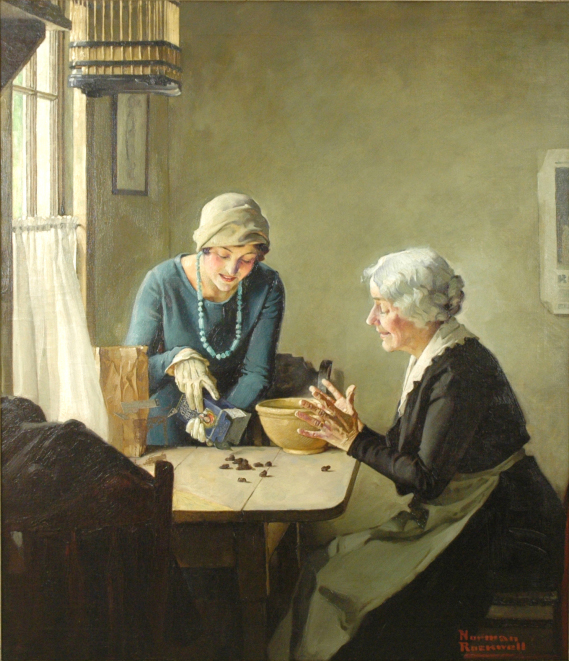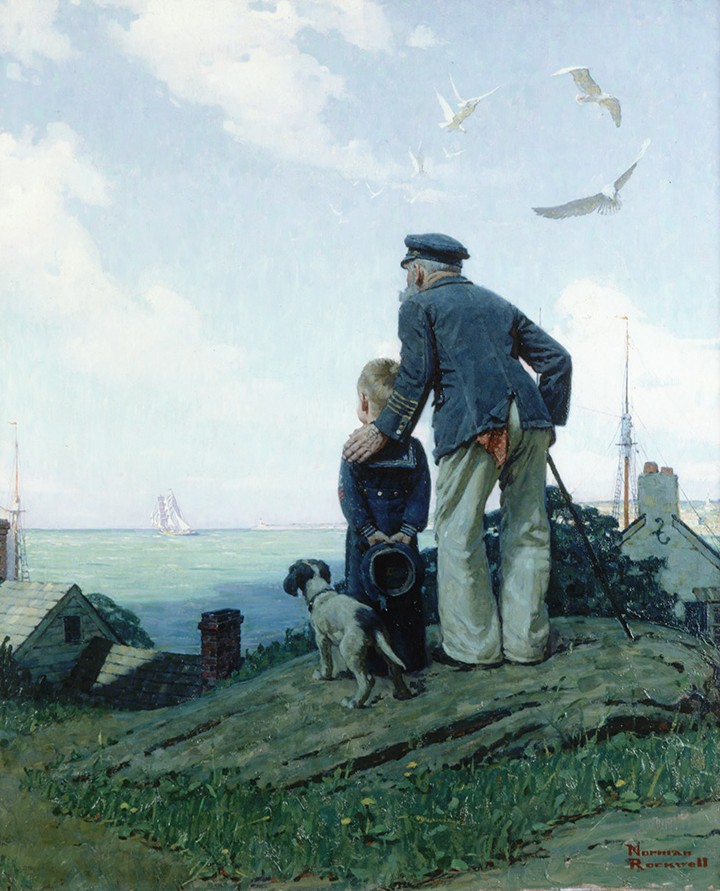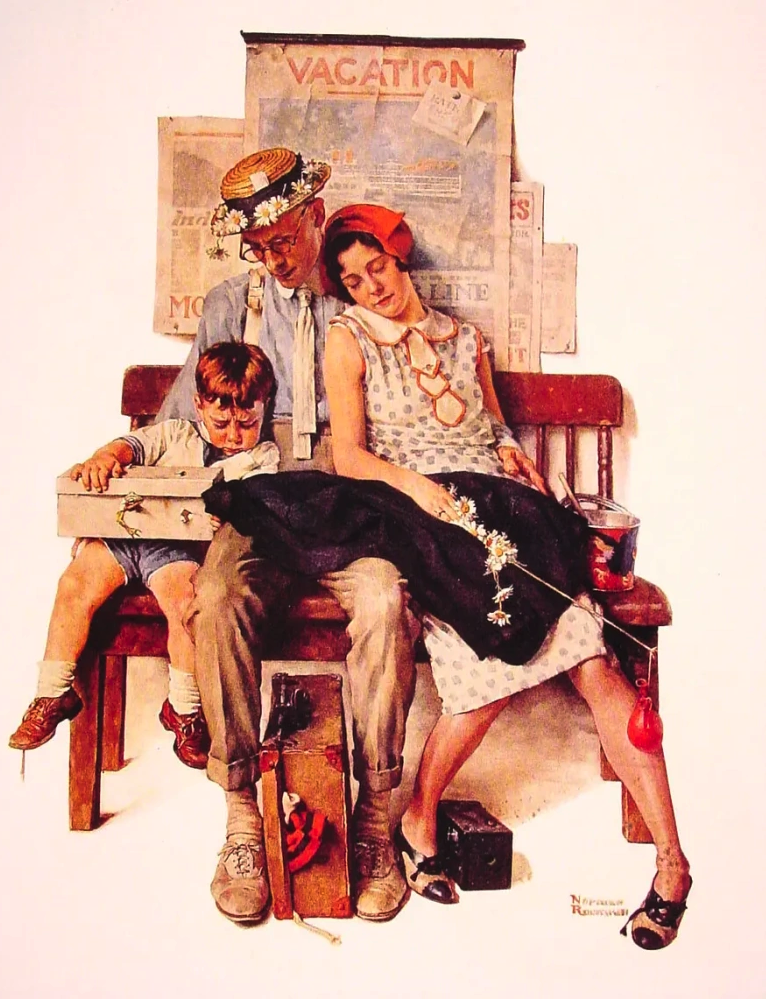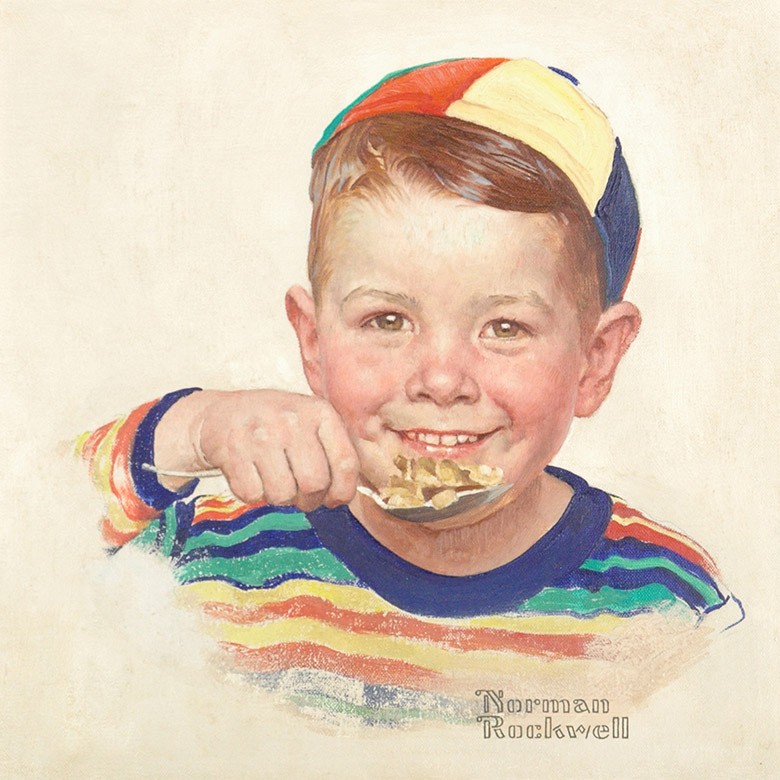Norman Rockwell: Highlights from the Collection
On View Now
Life’s simple pleasures and the blush of first love are the focus of Norman Rockwell’s 1926 Saturday Evening Post cover, which portrays a young couple entranced by the moon, and by each other’s company. Their rickety wooden seating bends under their weight but does not deter them from their reverie, for they are taking time to enjoy the moment.
In 1926, Rockwell had already been working for the Post for ten years. A self-proclaimed specialist in painting child-centered scenes, he elevated the status of his youthful subjects by portraying them as complex individuals with dignity, despite their economic status.
In this work, Rockwell recalls the pleasures of spending vacations on rural farms on Long Island and in upstate New York, a respite from the bustle of life in New York City, where he was born and spent his youth. His composition invites us to peer over the shoulders of the children who are not aware of our presence. Their simple fishing gear—a branch equipped with line and a blue and orange bobbin (which repeats the artist’s color palette)—has been placed down behind them. Enrapt as they are, they are not aware that their bait is escaping from the can, or that the dog, now a third wheel, gazes longingly out from the canvas.
About the Artist
“The commonplaces of America are to me the richest subjects in art.”
⸺Norman Rockwell
Among Norman Rockwell’s best-known illustrations are heartwarming scenes that capture the essence of American holiday traditions celebrated throughout the year⸺from Valentine’s Day and Independence Day to Halloween, Thanksgiving, and the magic of the Christmas season.
Rockwell’s connection to holiday-inspired art can be traced to his youth, when at the age of fifteen, a parishioner of his family’s church employed his talents for Christmas card designs. As an adult, Rockwell would work with Hallmark, a company that continues to market his midcentury illustrations for holiday greeting cards. The Saturday Evening Post, which showcased his art for forty-seven years, typically delegated Christmas, Thanksgiving, and New Year’s covers to its most popular illustrators. During Rockwell’s first year with the magazine in 1916, his work was featured on a December cover, and subsequently, the front pages of many additional holiday issues were assigned to him. Seasonal rituals and snowy New England landscapes are viewed through the eyes of homecoming veterans and cheerful, intergenerational families who inhabit Rockwell’s artworks.
Throughout his career, Rockwell considered a strong visual story concept was “the first thing and the last,” no matter the subject. He often told reporters that despite his unending work schedule, he indulged himself by taking a half-day off on Christmas. Though he used his own art to embellish seasonal cards for friends and family, he was not overly sentimental about the holidays. He viewed turkey carving as “a challenge rather than an invitation,” and he once remarked, “I’ve never played Santa Claus in my life. I wouldn’t dare to.” Holiday festivities were prominently featured in Rockwell’s work, and inspired readers to consider how their own experiences reflected, or stood in contrast, to those portrayed in his art. Many of Rockwell’s beloved seasonal images are on view.
IMAGES
MEDIA
American Chronicles: The Art of Norman Rockwell (Remastered)
Published: December 12, 2017
RELATED EVENTS
VENUE(S)
Norman Rockwell Museum, 9 Glendale Road, Stockbridge, MA 01262
DIRECTIONS
Norman Rockwell Museum
9 Glendale Road Route 183
Stockbridge, MA 01262
413-931-2221
Download a Printable version of Driving Directions (acrobat PDF).
Important note: Many GPS and online maps do not accurately place Norman Rockwell Museum*. Please use the directions provided here and this map image for reference. Google Maps & Directions are correct! http://maps.google.com/
* Please help us inform the mapping service companies that incorrectly locate the Museum; let your GPS or online provider know and/or advise our Visitor Services office which source provided faulty directions.














